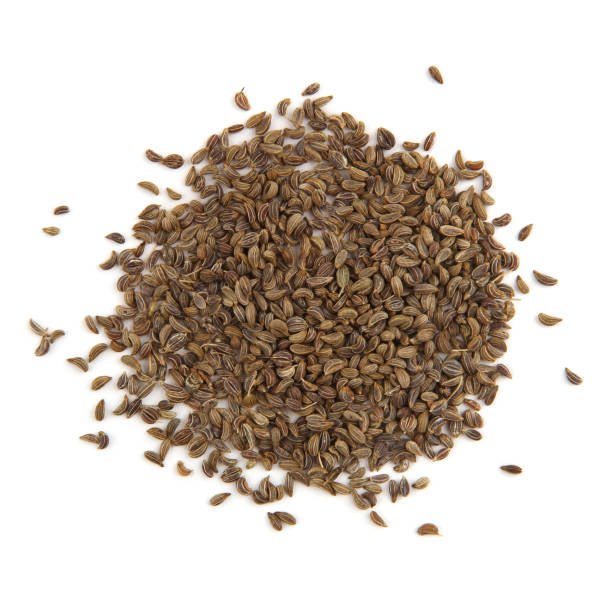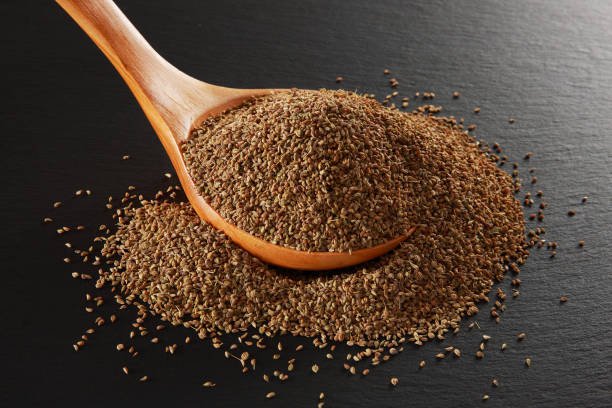Parsley Seeds :
Parsley seeds are small, oval-shaped, and slightly curved with a light brown to grayish color. They have a firm, ridged surface and a strong, earthy aroma. The seeds come from the parsley plant, a widely used herb in cooking and traditional medicine.
Parsley seeds are used for planting as well as in herbal remedies. They contain essential oils and compounds that give them a slightly bitter, aromatic flavor. In traditional medicine, they are known for their potential diuretic, digestive, and anti-inflammatory benefits.
Physical Characteristics :
Size and Shape: Parsley seeds are small, oval or slightly curved, typically measuring about 2–3 mm in length.
Color: The seeds are usually light brown to grayish-brown in color.
Texture: They have a hard, dry, and slightly ridged surface, making them firm to the touch.
Weight: Light in weight, with a relatively low bulk density, suitable for packaging and storage in large quantities.
Aroma and Flavor: Parsley seeds have a mildly earthy and slightly spicy aroma, with a bitter, herbaceous flavor when crushed.
These physical traits make parsley seeds suitable for both culinary and medicinal applications, as well as for cultivation.
Chemical Characteristics :
1. Essential Oils: Parsley seeds are rich in essential oils, primarily apiol and myristicin, which contribute to their distinct aroma and medicinal properties.
2. Flavonoids: Contain flavonoids like apigenin and luteolin, known for their antioxidant and anti-inflammatory effects.
3. Fatty Acids: Include oleic acid, linoleic acid, and palmitic acid, which are beneficial for overall health.
4. Volatile Compounds: Volatile components such as limonene and eugenol are present and contribute to the seeds’ characteristic scent and therapeutic effects.
5. Coumarins: Compounds like bergapten and umbelliferone are found, which may support detoxification and liver function.
6. Minerals and Trace Elements: Parsley seeds also contain calcium, magnesium, iron, and potassium, contributing to their nutritional and health value.
These chemical properties make parsley seeds useful in herbal medicine, aromatherapy, and as a natural remedy for digestive and urinary health.
Nutritional Value (per 100 grams)
Calories: 365 kcal
Protein: 18.0 g
Total Fat: 14.5 g
Saturated Fat: 1.2 g
Unsaturated Fat: 13.3 g
Carbohydrates: 50.6 g
Dietary Fiber: 12.2 g
Sugars: 1.1 g
Vitamins: Vitamin A: 421 IU -Vitamin C: 17.0 mg-Vitamin K: 1640 mcg-Folate (Vitamin B9): 152 mcg
Minerals: Calcium: 1140 mg-Iron: 14.8 mg-Magnesium: 370 mg-Potassium: 1100 mg-Phosphorus: 290 mg-Zinc: 2.1 mg
Quality Standards for Parsley Seeds:
“Compliant with local and European standards according to food safety regulations.”
Parsley seeds should be at least 98-99% pure, free from foreign matter, other seeds, and contaminants
The moisture content should not exceed 10-12% to prevent mold growth and ensure proper storage.
Seeds should be uniform in size and shape to ensure consistency in packaging and use.
Seeds must be light brown to grayish-brown, with no discoloration, mold, or visible damage.
The seeds should have the characteristic earthy aroma of parsley and should be free from any off-odors or rancidity.
Foreign matter such as stones, dirt, or plant debris should be minimal, generally not exceeding 0.5% of the total weight.
The seeds must be free from pests, insects, or any visible signs of infestation.
Microbiological Standards :
1. Total Plate Count (TPC):The total microbial load should be within acceptable limits, generally less than 1 × 10⁴ CFU/g, ensuring that the seeds are clean and safe for consumption.
2. Yeast and Mold Count: Should not exceed 1 × 10³ CFU/g. High levels of yeast and mold may indicate poor handling or storage conditions.
3. Coliform Bacteria :Coliform bacteria should be absent or present at minimal levels, ideally <10 CFU/g, which suggests proper sanitation during processing.
4. Escherichia coli (E. coli): E. coli should be absent in 1g. The presence of E. coli indicates contamination and is unacceptable in food-grade seeds.
5. Salmonella spp.: Salmonella should be absent in 25g of seeds.
Packaging and Storage :
As per the customer’s request, polypropylene bags and cartons.”
Temperature: Store the seeds in a cool, dry environment, ideally between 15–20°C (59–68°F), to prevent degradation.
Humidity: Maintain humidity levels below 60% to avoid mold growth and deterioration.
Ventilation: Ensure adequate air circulation in the storage area to prevent the accumulation of moisture
Pest Control: The storage area should be clean and pest-free, with regular inspections to avoid contamination.
Stacking: Store packages on
Shelf Life :
Under proper storage conditions—cool, dry, and airtight—parsley seeds have a shelf life of 1 to 2 years. To maintain their quality, it is important to store them in a place with temperatures between 15–20°C (59–68°F) and humidity levels below 60%. Ensuring proper packaging and using the First In, First Out (FIFO) method will help maintain their freshness and prevent degradation.
Traceability and Compliance;
Origin :Egypt
Application:
Spice and Seasoning: Parsley seeds are used in cooking for their mild, aromatic flavor, often added to soups, stews, salads, and sauces.
Pickling: They are commonly used in pickling recipes for their aromatic properties.
Herbal Blends: Often incorporated into spice blends, particularly in Mediterranean and Middle Eastern cuisines.
Digestive Health: Parsley seeds are traditionally used to support digestion and relieve bloating and indigestion.
Diuretic: Known for their diuretic properties, parsley seeds can help in increasing urine flow and managing water retention.
Anti-inflammatory: The seeds are believed to have anti-inflammatory effects, which can be helpful for conditions such as arthritis.
Parsley seed oil is used in aromatherapy for its calming and detoxifying effects.
Parsley seed extracts are sometimes found in skincare products for their antioxidant and anti-inflammatory properties.
Available in the form of capsules or extracts, parsley seeds are used for their potential health benefits, such as supporting kidney function and urinary health.
These uses highlight the versatility of parsley seeds in both culinary and health-related applications.
Contact information:





